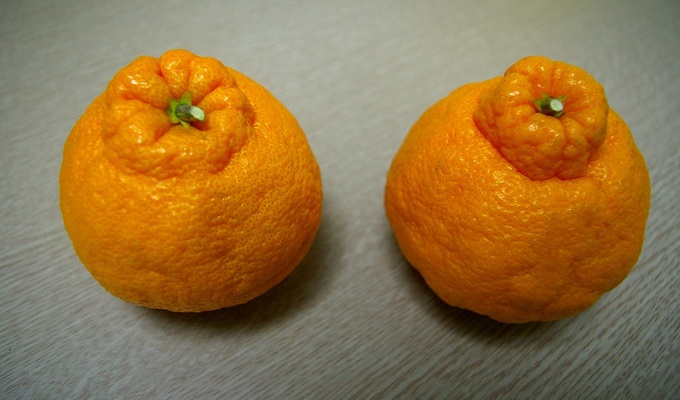Hallabong (한라봉) is a type of citrus fruit cultivated on Jeju Island, South Korea, known for its distinctive bulbous shape and top knot. A hybrid between an orange and a tangerine, hallabong is prized for its sweet, juicy flesh and easy-to-peel skin. Developed in Japan under the name Shiranui and introduced to Korea in the 1990s, it thrives in the mild climate of Jeju Island, particularly around Mount Hallasan, from which it derives its name. In the United States it is marketed as Sumo citrus.
The fruit is typically in season during the winter months and has become a popular gift and delicacy throughout South Korea. In addition to being eaten fresh, hallabong is often used in juices, desserts, and even skincare products due to its high vitamin C content.
